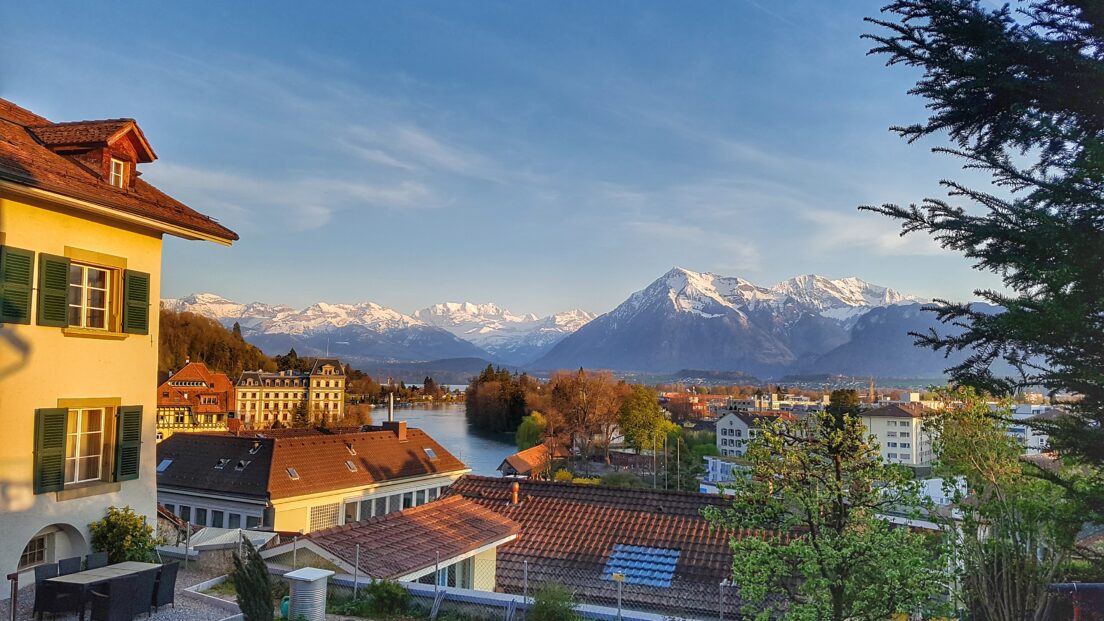Thun’s strategic view of urban development with STEK 2035

With the STEK 2035 urban development concept, the city of Thun is presenting a visionary urban development strategy that strives to strike a balance between urban development and the protection of historical qualities and natural resources in the face of changing needs. In doing so, Thun is emphasising its commitment to a sustainable and liveable future.
The STEK 2035 identifies the core themes of urban development and organises them into five strategic areas: Living, working, mixed-use areas and centres, landscape and open spaces as well as urban space and mobility. Specific measures and fields of action are identified for the implementation of these strategies.
The strategy is designed as a steering instrument for urban development. It serves as a basis for future neighbourhood, area and landscape developments, for the coordination of settlements and transport and for the careful and attractive design of public spaces and open spaces. It also forms the basis for the revision of the basic building and planning regulations (revision of the building regulations and the zoning plan).
The “Housing” strategy shows Thun a clear way to make the future housing supply attractive, diverse and contemporary and to revitalise neighbourhoods so that a good social mix can be promoted. This involves identifying areas with particularly high development potential and others where the focus is on preserving historical and particularly valuable qualities.
As the eleventh largest city in Switzerland with a population of around 45,000, Thun is enjoying growing popularity. This is not least due to the many green spaces and the special character of the city. The different atmospheres of the neighbourhoods create a unique cityscape that harmoniously combines urban, suburban and rural elements.
The “Working” strategy creates the framework conditions for the further development of trade, industry and work. With a view to stronger development in the service sector, the city places particular emphasis on mixed areas that offer space for both housing and jobs. Certain areas are explicitly earmarked for labour-intensive uses or even the military. The city of Thun plays an important role as a regionally significant employment location for both the surrounding municipalities and the entire Oberland region.
Another building block of Thun’s urban development is the “Mixed areas and centres” strategy. The focus here is on making the city centre more attractive. Mixed-use areas that combine living, working and leisure are of central importance. Thun’s city centre, with its good accessibility and concentration of services, forms the heart of the city and is a model for other diverse and lively mixed-use areas. To complement the city centre, attractive secondary centres are being promoted and existing supply locations developed in a targeted manner. At the same time, Thun attaches great importance to strengthening the neighbourhood centres, which are indispensable for providing the population with basic services.
The “Landscape and open spaces” strategy underlines the desire to strike a balance between settlement development and the protection of ecologically valuable areas. The preservation of cultivated land, the protection of habitats and access to green spaces take centre stage. Particular attention is paid to the networking of green spaces in order to preserve nature and protect special landscapes such as Strättlighügel or Haslimoos.
To summarise, it can be said that the importance of public green and open spaces in the midst of high-quality inner-city development is steadily increasing. The STEK 2035 emphasises this and considers open spaces to be indispensable for high-quality urban development. This supports Thun’s aspiration to be a sustainable and liveable city with a comprehensive quality of life.